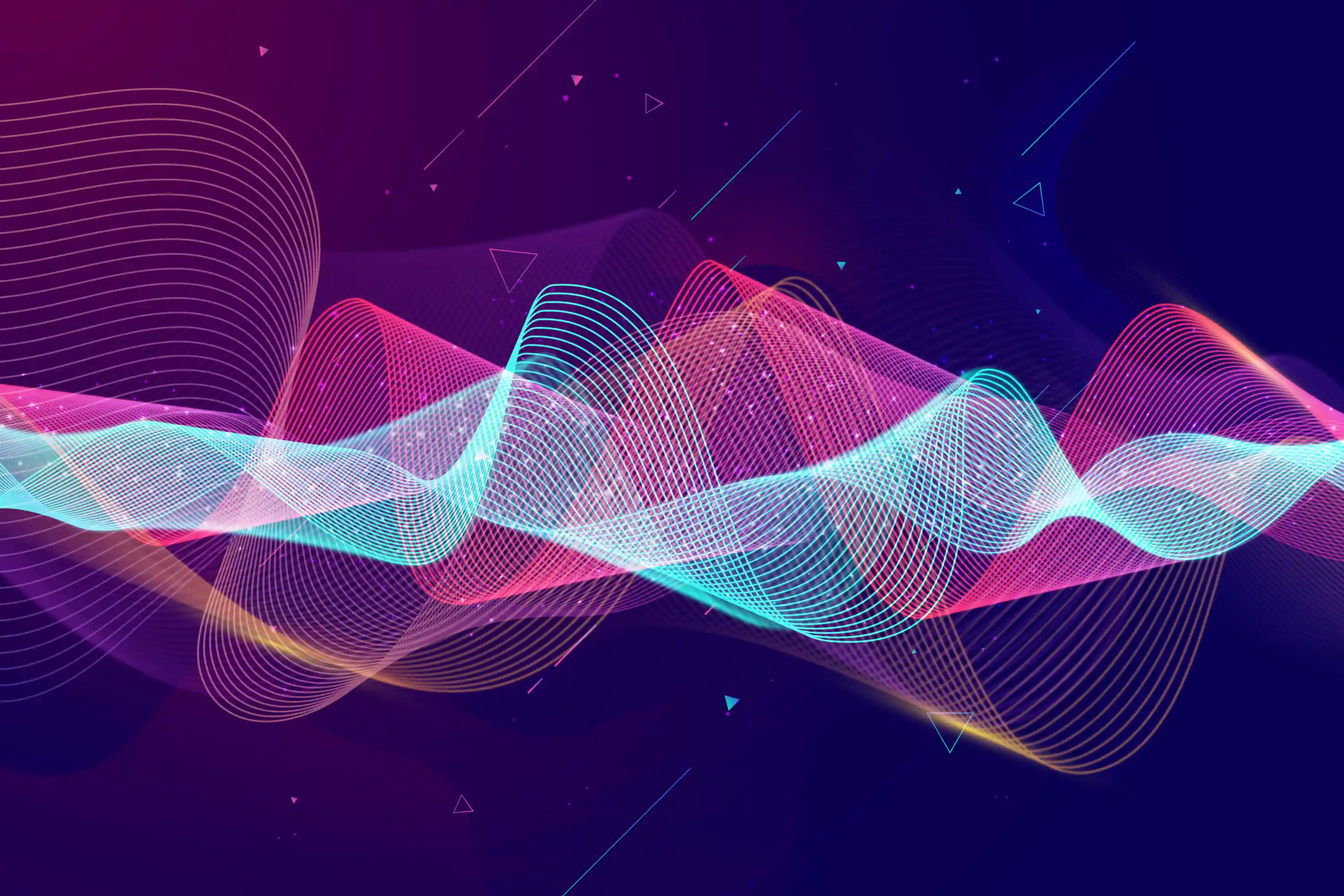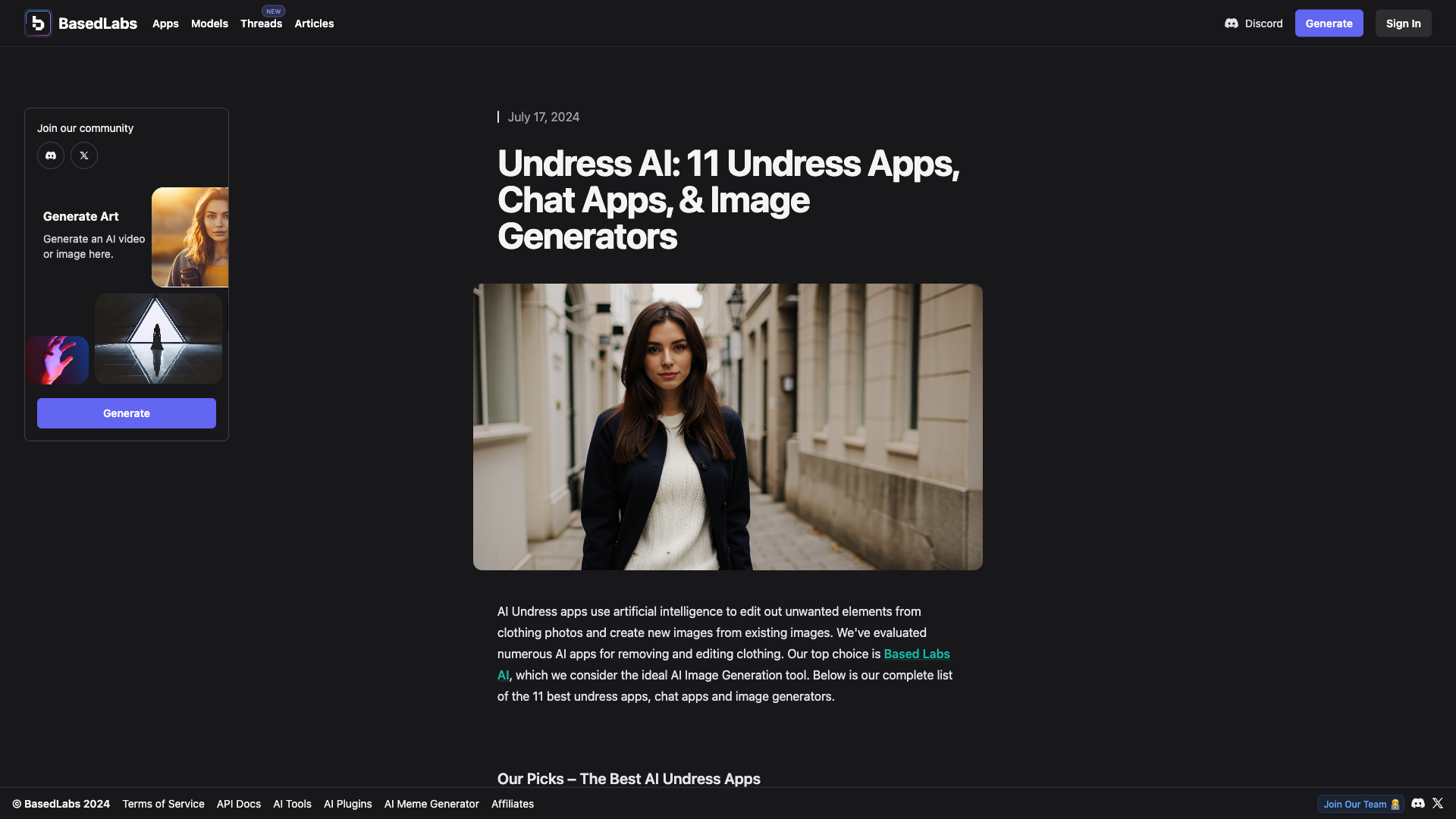Hey there, tech enthusiasts and curious minds! Today, we're diving into a topic that’s been making waves in the digital world—free undress AI. If you’ve been scrolling through the internet lately, chances are you’ve come across this term, and maybe you’re wondering what all the fuss is about. Well, buckle up because we’re about to break it down for you in a way that’s easy to digest and packed with insights. Whether you’re here out of curiosity or looking to understand the implications of this technology, you’re in the right place!
Now, let’s set the stage. Free undress AI is not just another buzzword; it’s a powerful tool that leverages artificial intelligence to create realistic simulations. It’s like giving your imagination a boost, but with the help of cutting-edge technology. In this guide, we’ll explore what exactly free undress AI is, how it works, and why it’s causing quite a stir in the tech community.
But before we dive deep into the nitty-gritty, let’s address the elephant in the room. This technology, while fascinating, also raises important questions about ethics, privacy, and its potential impact on society. So, if you’re ready to embark on this journey of discovery, let’s get started. Stick around because we’ve got some eye-opening insights coming your way!
- Mastering The Art Of Tata Towel Your Ultimate Guide
- Randolph Hearst The Fascinating Life And Legacy Of A Media Moguls Scion
What Exactly is Free Undress AI?
Alright, let’s start with the basics. Free undress AI refers to a type of artificial intelligence software that’s designed to simulate the process of undressing individuals in digital images or videos. Sounds wild, right? But here’s the deal—it’s not as straightforward as it seems. This technology uses advanced algorithms to analyze and manipulate visual data, creating realistic simulations that can be both impressive and unsettling.
Breaking Down the Technology
At its core, free undress AI relies on deep learning techniques, specifically neural networks, to process and interpret visual data. These networks are trained on vast datasets of images, allowing them to recognize patterns and make predictions about how certain elements in a picture might look when altered. The result? A simulation that’s eerily lifelike and often indistinguishable from reality.
Here are some key features of free undress AI:
- How Did Heavy D Sparks Make His Money The Untold Story
- Unveiling The Talents Of Actress Ronnie Claire Edwards A Journey Through Her Life And Career
- Uses machine learning to analyze and manipulate images.
- Capable of producing highly realistic results.
- Operates on the principles of deepfake technology.
- Raises ethical concerns about consent and privacy.
The Rise of Free Undress AI: A Brief History
Like many groundbreaking technologies, free undress AI didn’t just appear out of thin air. Its origins can be traced back to the development of deepfake technology, which emerged in the mid-2010s. Deepfakes, as you might know, involve the use of AI to create or manipulate visual content, often for entertainment or malicious purposes. Over time, these technologies have become more accessible, leading to the rise of tools like free undress AI.
How Did We Get Here?
The evolution of free undress AI is closely tied to advancements in computer vision and image processing. As researchers and developers pushed the boundaries of what AI could achieve, they inadvertently paved the way for tools that could manipulate digital content in unprecedented ways. While the potential applications of this technology are vast, its ethical implications have sparked intense debates within the tech community.
How Does Free Undress AI Work?
Let’s get technical for a moment. Free undress AI operates by analyzing the structure and composition of an image or video. It uses a combination of neural networks and machine learning algorithms to identify key elements, such as clothing, and then applies transformations to simulate the removal of those elements. The process involves several steps:
- Data Collection: The AI is trained on large datasets of images and videos to learn how different materials and textures appear.
- Pattern Recognition: Once trained, the AI can recognize patterns in new images and predict how they might look when altered.
- Image Manipulation: Using advanced algorithms, the AI manipulates the image to create a realistic simulation of the desired effect.
Key Components of the Process
Understanding the mechanics of free undress AI is crucial to grasping its capabilities and limitations. Here’s a closer look at the key components:
- Neural Networks: These are the backbone of the technology, enabling it to learn and adapt based on input data.
- Deep Learning: A subset of machine learning that allows the AI to process complex patterns and relationships in visual data.
- Image Processing: The final step, where the AI applies transformations to create the desired output.
The Ethical Dilemma: Privacy and Consent
Now, let’s talk about the elephant in the room. While free undress AI is undeniably impressive from a technical standpoint, it also raises serious ethical concerns. One of the biggest issues is the question of consent. In many cases, individuals whose images are used in these simulations have no idea that their likeness is being manipulated. This raises important questions about privacy, autonomy, and the responsible use of technology.
What Are the Risks?
The risks associated with free undress AI are multifaceted. Here are a few key concerns:
- Non-Consensual Use: The technology can be used to create content without the subject’s permission, leading to potential harm and distress.
- Privacy Violations: Individuals may find their personal information exposed without their knowledge or consent.
- Misinformation: Free undress AI can be used to spread false or misleading content, undermining trust in digital media.
Legal Implications and Regulations
As with any emerging technology, the legal landscape surrounding free undress AI is still evolving. Currently, there are no specific laws governing the use of this technology, but that doesn’t mean it’s a free-for-all. Many countries are beginning to recognize the potential risks and are exploring ways to regulate its use. Here’s a look at some of the key legal issues:
- Intellectual Property: Questions about ownership and usage rights are becoming increasingly important as AI-generated content becomes more prevalent.
- Privacy Laws: Existing privacy laws may apply to the use of free undress AI, particularly when it comes to non-consensual content creation.
- Cybersecurity: The potential for misuse of this technology highlights the need for robust cybersecurity measures to protect individuals and organizations.
What’s Being Done?
Governments and tech companies are beginning to take action. For example, some platforms are implementing stricter content moderation policies to prevent the spread of harmful or misleading content. Additionally, researchers are exploring ways to develop tools that can detect and counteract the effects of free undress AI.
Applications Beyond the Controversy
Despite the controversies surrounding free undress AI, there are some positive applications of this technology. For instance, it can be used in the fashion industry to create virtual try-ons, allowing consumers to see how clothing might look on them without physically trying it on. It can also be used in medical imaging to enhance diagnostic accuracy and improve patient outcomes.
Exploring the Possibilities
Here are a few examples of how free undress AI is being used in innovative ways:
- Fashion Design: Designers can experiment with new styles and fabrics without the need for physical prototypes.
- Medical Research: Researchers can use AI simulations to study the effects of different treatments on the human body.
- Entertainment: Filmmakers and game developers can create more realistic and immersive experiences using AI-driven visual effects.
The Future of Free Undress AI
As we look to the future, it’s clear that free undress AI is here to stay. The technology will continue to evolve, becoming more sophisticated and accessible over time. However, its development will also depend on how society chooses to address the ethical and legal challenges it presents. Here are a few predictions for the future:
- Improved Regulation: We can expect to see more robust laws and regulations governing the use of AI technologies like free undress AI.
- Advancements in Detection: Researchers will likely develop more effective tools for detecting and countering the misuse of this technology.
- Broader Adoption: As the technology becomes more refined, we may see it being used in a wider range of industries and applications.
What’s Next?
The path forward will depend on how stakeholders—developers, policymakers, and consumers—choose to navigate the complexities of free undress AI. Collaboration and open dialogue will be key to ensuring that this technology is used responsibly and ethically.
Conclusion: Where Do We Go From Here?
So, there you have it—a comprehensive look at free undress AI and its implications for the digital world. While the technology offers exciting possibilities, it also raises important questions about privacy, consent, and the responsible use of AI. As we continue to explore its potential, it’s crucial that we approach it with caution and a commitment to ethical standards.
Now, it’s your turn. What are your thoughts on free undress AI? Do you see it as a tool for innovation or a cause for concern? Let us know in the comments below, and don’t forget to share this article with your friends and followers. Together, we can foster a deeper understanding of the technologies shaping our world!
Table of Contents
- Soros Net Worth A Closer Look At The Financial Empire Of George Soros
- Andrew Witty Education A Comprehensive Insight Into His Academic Journey


